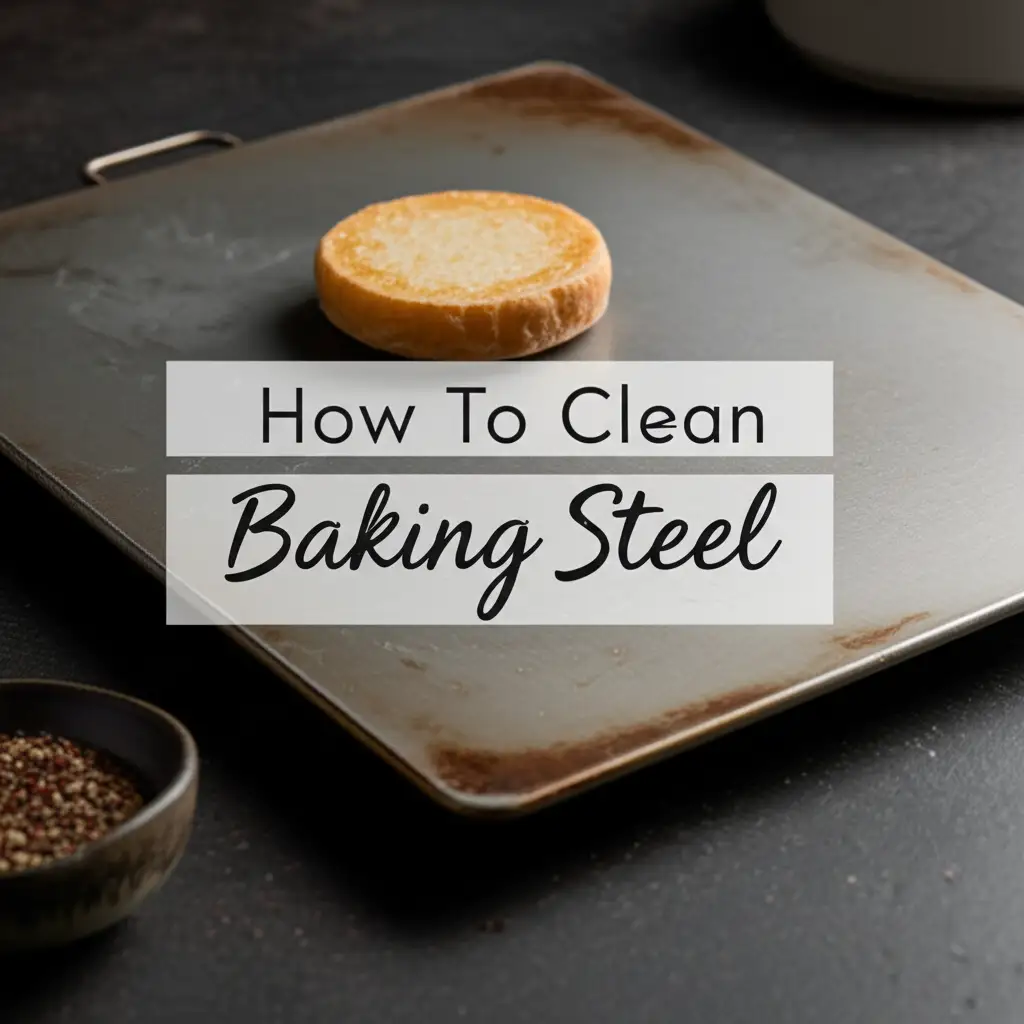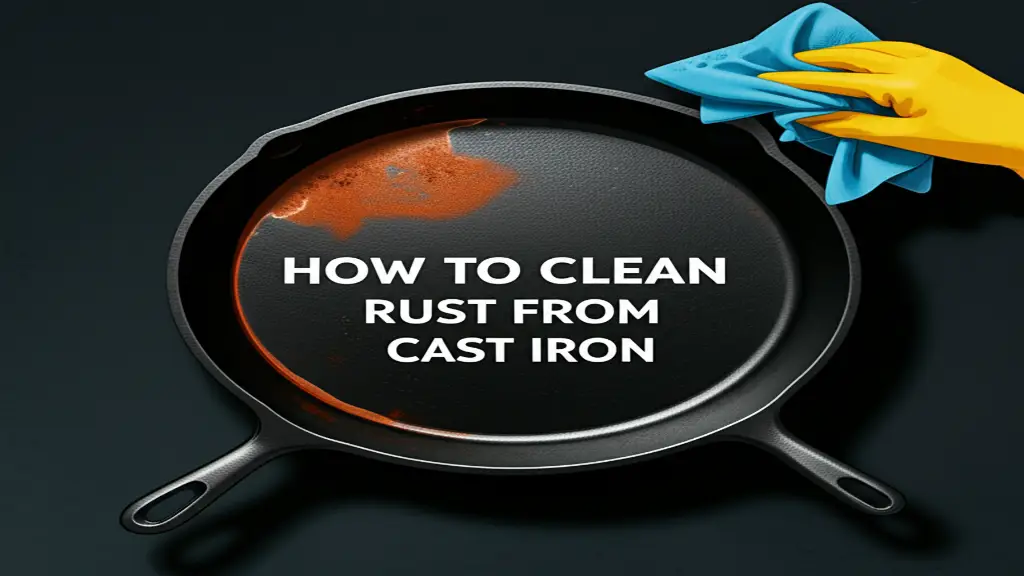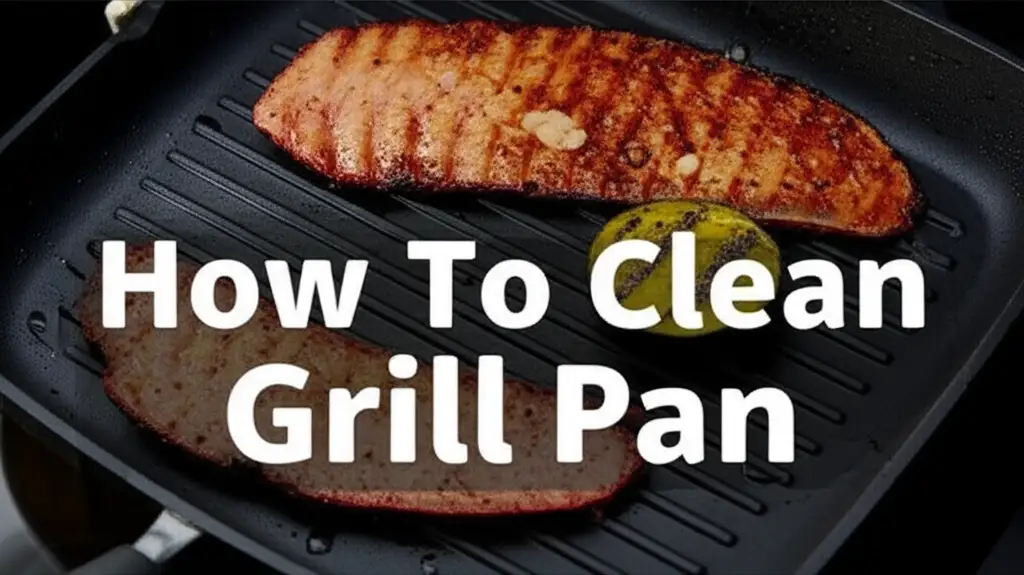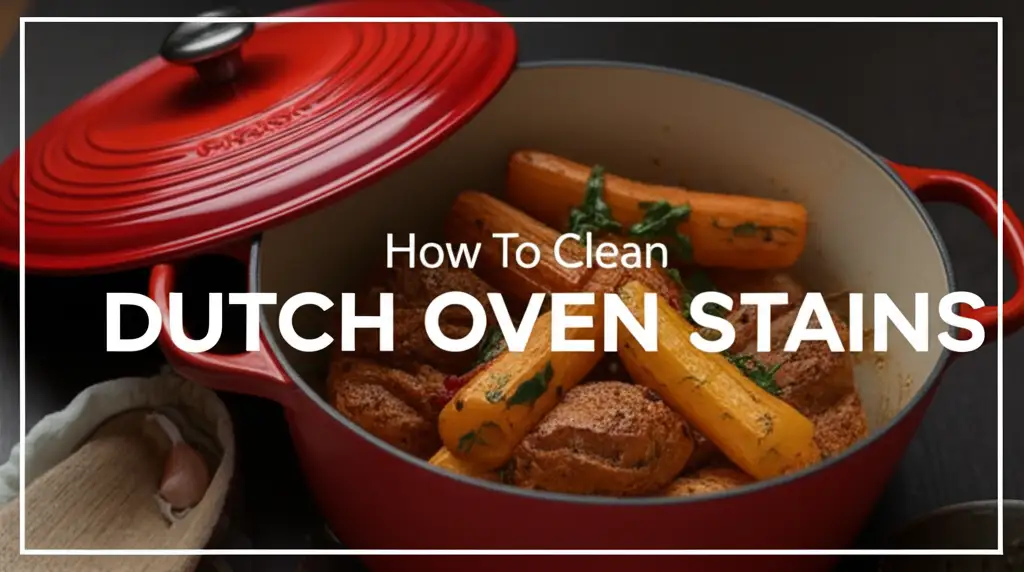· Kitchen Care · 14 min read
How To Clean Baking Steel

Unlock the Secrets: How to Clean Baking Steel for Peak Performance
Your baking steel is an incredible tool for making crispy pizzas and perfect bread. It holds heat wonderfully, giving your food an excellent crust. Many people wonder, “How do I clean my baking steel properly?” It is a common question. Some people think cleaning steel is hard, but it is actually quite simple. Proper cleaning keeps your steel working well for years. It also helps your food taste its best.
This article will show you exactly how to clean baking steel. We will cover daily cleaning, removing tough stains, and preventing rust. We will also talk about seasoning your steel, which is very important. By the end, you will know all the steps to keep your baking steel in top condition. You will make delicious food every time you use it. Let’s get your baking steel sparkling clean!
Takeaway:
- Always clean baking steel after each use using hot water and a scraper.
- Avoid harsh soaps and dishwashers to protect the steel’s seasoning.
- Deal with stubborn residue promptly using a steel scraper or hot water soak.
- Address rust immediately with vinegar and a stiff brush, then re-season.
- Regular seasoning is key for protection, non-stick properties, and longevity.
- Store your baking steel in a dry place to prevent rust.
To clean baking steel, scrape off food residue with a metal spatula. Rinse the steel with hot water, avoiding soap. Scrub any remaining bits with a stiff brush or non-abrasive pad. Dry it completely and immediately. Apply a thin layer of cooking oil to re-season the surface.
Why Proper Baking Steel Cleaning Matters
Having a clean baking steel is more important than you might think. This heavy piece of metal does a fantastic job cooking. It conducts heat much better than a baking stone. This means your pizzas get a crispier crust. Keeping it clean ensures it works well every time you use it. I always make sure my baking steel is clean before I put it away.
A clean steel performs better. Food will stick less if the surface is smooth and well-maintained. A dirty steel can transfer old flavors to new food. This is not what you want when making a fresh pizza. Plus, a build-up of old food or grease can affect heat distribution. This means your food might not cook evenly.
Proper cleaning also extends the life of your baking steel. Steel can rust if it stays wet or dirty. Rust damages the surface. It can make your steel unusable over time. Regular care prevents rust from forming. It keeps your steel in prime condition for many years. You protect your investment when you clean it correctly. Think of it as a small effort for big rewards. It is worth it to keep your steel in good shape. My baking steel has lasted years because I clean it right.
Basic Cleaning Steps for Your Baking Steel
Cleaning your baking steel after each use is simple. It does not take much time. Start by letting the steel cool down completely. Never clean a hot baking steel. Rapid temperature changes can damage it. Once cool, take it to your sink.
First, use a metal spatula or scraper to remove any large food pieces. Scrape gently but firmly. You want to get off any burnt cheese or dough bits. Most food should come off easily. You can also use a bench scraper for this task. It works very well on flat surfaces.
Next, rinse the steel with very hot water. Do not use dish soap. Soap can strip the seasoning layer. The seasoning protects your steel and makes it non-stick. If you use soap, you will need to re-season the steel. I often just use hot water for simple clean-ups. Use a stiff nylon brush or a non-abrasive sponge. Scrub any remaining residue. Pay attention to corners and edges. Make sure all food particles are gone.
Finally, and this step is crucial, dry your baking steel immediately. Use a clean towel. Ensure there is no moisture left on the surface. Moisture causes rust. After drying, place the steel back in a warm oven for a few minutes. This removes any last bits of water. Then, apply a very thin layer of high smoke point oil, like grapeseed or flaxseed oil. This re-seasons the surface. It helps maintain its protective layer. This simple routine keeps your steel ready for the next bake. For more tips on general steel cleaning, you can review this guide on how to clean stainless steel.
Dealing with Stubborn Food Residue on Baking Steel
Sometimes, simple cleaning is not enough. You might find stubborn food residue stuck to your baking steel. This happens with very cheesy pizzas or spills. Do not worry; you can still clean it without damaging your steel. The key is to be patient and avoid harsh chemicals.
First, try scraping again. Use a sturdy metal spatula or a bench scraper. Apply more pressure this time. Push firmly to dislodge burnt-on bits. You can also use a plastic scraper if you are concerned about scratching. For really tough spots, I sometimes use a brass brush. It is softer than steel wool but effective. Just be gentle.
If scraping alone is not enough, try a hot water soak. Place the baking steel in your sink or a large tub. Fill it with very hot water. Let it soak for 15-30 minutes. This helps loosen the stubborn residue. After soaking, try scraping again. The hot water often makes the task much easier. You might be surprised how much comes off after a soak.
For extreme cases, a paste of baking soda and water can help. Mix a small amount of baking soda with water to form a thick paste. Apply this paste to the stubborn spots. Let it sit for 10-15 minutes. Then, scrub with a stiff brush or a non-abrasive pad. Baking soda is a gentle abrasive. It can lift stuck-on food without harming the steel. Remember to rinse thoroughly with hot water afterward. Dry completely and re-season as usual. This method is similar to how you might clean stains on stainless steel. For grease that is hard to remove, learning how to clean grease off stainless steel can also provide helpful techniques.
Removing Rust from Your Baking Steel
Rust can appear on baking steel if it gets wet and is not dried properly. It looks like reddish-brown spots. Do not panic if you see rust. You can remove it. Removing rust quickly prevents more damage. I have had to remove rust from my steel before. It is fixable.
To remove light rust, use a stiff brush or fine steel wool. Scrub the rusted areas firmly. You want to remove all the red-brown discoloration. For tougher rust spots, you can use a small amount of vinegar. White vinegar is acidic. It helps break down the rust. Pour a little vinegar directly onto the rust. Let it sit for a few minutes. Then, scrub vigorously with a stiff brush or steel wool. The rust should start to come off.
After scrubbing, rinse the baking steel thoroughly with hot water. Make sure no vinegar or rust particles remain. Vinegar can be harsh if left on too long. Immediately dry the steel completely with a towel. Then, place it in a warm oven for 10-15 minutes. This ensures it is bone dry. Any remaining moisture will cause new rust.
Once dry, you must re-season the baking steel. Rust removal strips away the existing seasoning. Apply a thin layer of high smoke point oil over the entire surface. Wipe off any excess. Then, bake the steel in the oven at 400-450°F (200-230°C) for an hour. This creates a new protective layer. Repeat the seasoning process two or three times if the rust was severe. This ensures good protection. For more in-depth methods, understanding how to clean rust off stainless steel can be very beneficial.
The Importance of Seasoning Your Baking Steel
Seasoning your baking steel is a crucial step in its care. It is not just about aesthetics. Seasoning builds a protective layer on the steel’s surface. This layer is polymerized oil. It acts as a natural non-stick coating. It also prevents rust. Think of it as painting a car to protect it from the elements. I always make sure my steel is well-seasoned.
A well-seasoned baking steel will give you better cooking results. Food will release more easily. This means your pizzas slide off without sticking. It also helps your crusts develop a beautiful golden brown color. The seasoning also contributes to the flavor profile. Over time, the steel absorbs flavors from your cooking, just like a cast iron pan.
You should season your baking steel when it is new. You should also re-season it after deep cleaning. This includes cleaning rust or very stubborn residue. To season, ensure the steel is completely clean and dry. Apply a very thin, even layer of high smoke point oil. Grapeseed, flaxseed, or avocado oil work well. Use a paper towel to spread the oil. Wipe off any excess. The steel should look almost dry, not greasy. Excess oil will become sticky.
Place the steel in a cold oven. Then, preheat the oven to 400-450°F (200-230°C). Bake for one hour. Turn off the oven and let the steel cool inside. This process bakes the oil onto the steel. It creates that durable protective layer. Repeating this process 2-3 times builds a stronger seasoning. Regular use also contributes to seasoning. Each time you cook on it, you add to its protective layer. This layer makes your steel last longer. It also makes your cooking easier.
Preventative Measures for Baking Steel Care
Taking good care of your baking steel is easy. A little prevention goes a long way. These simple steps keep your steel in great shape. They also reduce the need for deep cleaning. I practice these steps every time I use my steel.
First, always preheat your baking steel thoroughly. A properly preheated steel cooks food better. It also helps prevent food from sticking. This means less residue to clean later. Always make sure your oven is at the correct temperature before placing food on the steel.
Second, avoid using sharp objects directly on the steel’s surface during cooking. While a metal spatula is good for cleaning, be careful when handling food. Try to lift food rather than dragging it. This prevents scratches. Scratches can damage the seasoning. They also create spots where food might stick.
Third, store your baking steel properly. After cleaning and seasoning, ensure it is completely dry. Store it in a dry place. Do not store it in a damp cabinet or basement. Humidity can lead to rust. Some people store their baking steel in the oven. This is a good option. The oven stays dry. It also means your steel is always ready to go. My steel lives in my oven. This makes it convenient to use.
Finally, clean up spills immediately. If food spills onto the steel during baking, address it once the steel cools. Do not let food residue sit for days. Old food becomes harder to remove. Prompt cleaning saves you time and effort later. These small habits make a big difference in the longevity of your baking steel. Consider these measures alongside cleaning other kitchen items like baking sheets for overall kitchen hygiene.
Common Mistakes to Avoid When Cleaning Baking Steel
Cleaning your baking steel is straightforward. However, some common mistakes can damage it. Knowing what to avoid saves you time and keeps your steel in prime condition. I learned these lessons through experience.
The biggest mistake is using harsh dish soap. Most dish soaps are designed to strip grease. This is bad for your baking steel. They will remove the seasoning layer you worked so hard to build. If the seasoning is gone, your steel will lose its non-stick properties. It will also become prone to rust. Stick to hot water and a scraper for daily cleaning. If you must use a tiny bit of soap for a very greasy mess, re-season immediately afterward. For cleaning other items like stainless steel pans with baking soda, soap is often fine, but not for baking steel.
Another common mistake is putting your baking steel in the dishwasher. Dishwashers use harsh detergents and hot water cycles. These strip seasoning completely. They also expose the steel to prolonged moisture. This guarantees rust. Baking steel is a heavy piece of cookware. It is not designed for dishwasher cleaning. Always wash it by hand. This protects its surface.
Leaving your baking steel wet after cleaning is also a big no-no. Moisture is the enemy of raw steel. Even small amounts of water can cause rust. Always dry your steel thoroughly with a towel. Then, heat it in the oven for a few minutes. This ensures all moisture evaporates. You want it completely dry before storage.
Finally, avoid letting food burn onto the steel for long periods. While you can remove stubborn residue, it is easier to clean when addressed promptly. Excessive burnt food can be very difficult to scrape off. It might also require stronger methods. This can stress the seasoning. Preventative care is always best. Avoid these common pitfalls to keep your baking steel performing its best. If you use stainless steel pans, learning how to clean stainless steel pans might give you different instructions as they are often more forgiving with soap.
Frequently Asked Questions About Cleaning Baking Steel
Can I use soap to clean my baking steel?
It is generally best to avoid soap when cleaning your baking steel. Soap can strip away the seasoning layer. This layer protects the steel from rust and provides a non-stick surface. Use only hot water and a scraper for most clean-ups. If you must use a tiny amount for severe grease, re-season your steel immediately afterward.
How often should I season my baking steel?
You should season your baking steel when it is new. Re-season it after any deep cleaning, like rust removal or heavy scrubbing. Regular use of your baking steel also contributes to its seasoning over time. If your food starts to stick or you see dull spots, it is a good time to re-season.
My baking steel has rust. Can I still use it?
Yes, you can usually remove rust from your baking steel. Use white vinegar and a stiff brush or fine steel wool to scrub away the rust. After removing the rust, rinse the steel thoroughly, dry it completely, and immediately re-season it. This will restore its protective layer and make it safe to use again.
What kind of oil should I use for seasoning?
Use a high smoke point oil for seasoning your baking steel. Good choices include grapeseed oil, flaxseed oil, or avocado oil. These oils can withstand high temperatures without breaking down. They create a strong, durable seasoning layer. Apply a very thin, even coat.
Can I put my baking steel in the dishwasher?
No, never put your baking steel in the dishwasher. Dishwashers use strong detergents and expose the steel to prolonged moisture. This will strip the seasoning completely and cause rapid rusting. Always wash your baking steel by hand using hot water and dry it immediately.
How do I store my baking steel to prevent rust?
After cleaning and completely drying your baking steel, store it in a dry environment. Many people store their baking steel inside their oven. This keeps it dry and ready for use. Avoid damp places like basements or unventilated cabinets, as moisture can lead to rust formation.
Conclusion
Cleaning your baking steel is a simple but vital part of its care. You now know the best ways to keep your steel in top condition. We covered basic cleaning steps. We also talked about how to handle tough food residue. Dealing with rust is also now something you can do with confidence. Remember the importance of seasoning for protection and performance.
By avoiding common mistakes like using harsh soap or the dishwasher, you will extend your baking steel’s life. Following these guidelines ensures your steel remains a powerful tool in your kitchen for years. A well-maintained baking steel delivers perfect results every time. It will continue to give you delicious, crispy pizzas and beautifully baked bread. Keep your steel clean, dry, and seasoned. Your cooking will thank you for it! Start cleaning your baking steel the right way today.
- baking steel
- pizza steel
- kitchen cleaning
- cookware maintenance
- rust removal
- seasoning




